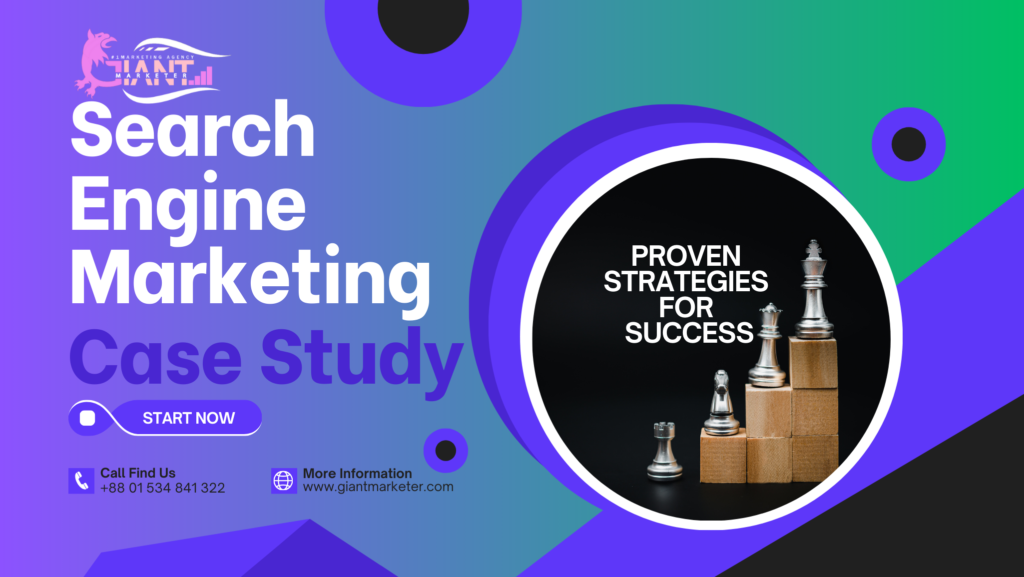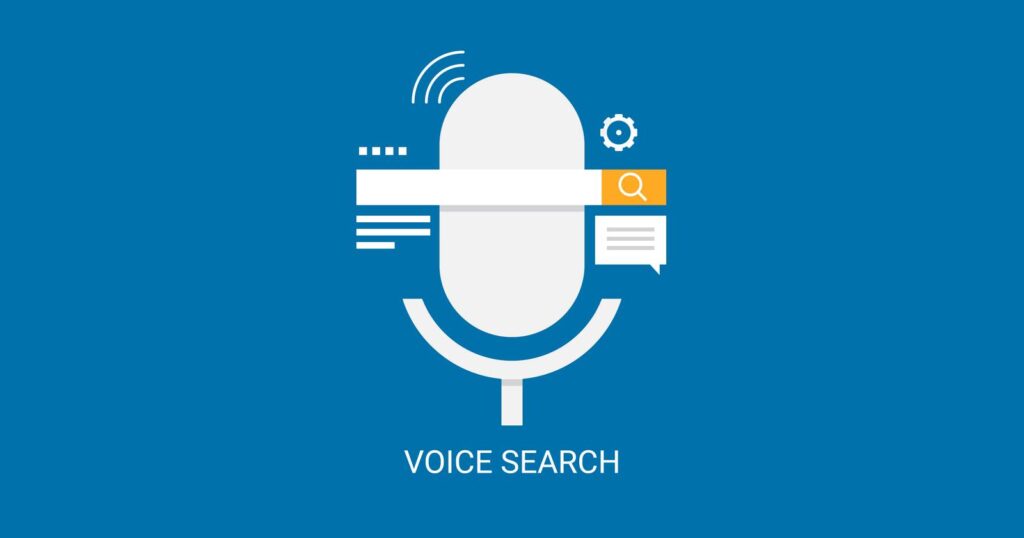Search Engine Marketing Case Study: A well-executed SEM strategy increased website traffic by 40% in three months. This led to a 25% rise in sales.
Search Engine Marketing (SEM) is crucial for businesses aiming to boost online visibility and drive targeted traffic. Through paid advertising like Google Ads, companies can appear prominently on search engine results pages (SERPs). Effective SEM campaigns combine keyword research, ad creation, and performance analysis.
These elements ensure ads reach the right audience and achieve optimal results. Businesses often see immediate improvements in traffic and conversions.
SEM also allows for precise budget control and measurable ROI. Utilizing SEM, companies can compete effectively in their industry, attracting more potential customers and increasing overall sales.

Introduction To Search Engine Marketing
A detailed Search Engine Marketing case study reveals effective strategies for boosting online visibility. Real-world examples demonstrate successful campaign tactics and optimization techniques.
What Is SEM?
Search Engine Marketing, or SEM, helps businesses get seen online. It involves paid advertisements that appear on search engine results pages. These ads are also known as PPC or pay-per-click ads.
SEM can drive immediate traffic to your website. It works by bidding on keywords that users search. The ads show up when people search these keywords.
Importance Of SEM
SEM is essential for businesses today. It increases visibility on search engines. This means more people see your website. SEM also targets specific audiences. This ensures the right people see your ads.
It can lead to more sales and growth for your business. Using SEM, you can measure results and adjust your strategy. This makes it a powerful tool for marketing.
Setting Goals And Objectives
Creating clear goals and objectives drives successful search engine marketing. Establishing benchmarks helps measure progress and optimize strategies effectively. Achieving targeted outcomes enhances visibility and engagement.
Defining KPIs
Defining KPIs is very important. These KPIs measure the success of your marketing efforts. Common KPIs include click-through rate (CTR), conversion rate, and cost per acquisition (CPA).
Each KPI should be specific, measurable, and achievable. Using KPIs helps track progress and make data-driven decisions.
Aligning With Business Goals
Marketing goals must align with business objectives. This ensures that efforts contribute to overall success. For instance, if a business wants more sales, focus on increasing conversion rate. Aligning goals helps in achieving better results and ensures strategic coherence.
Keyword Research
Keyword research forms the backbone of successful search engine marketing. This case study highlights effective strategies for identifying high-impact keywords. Boost your campaign’s visibility and engagement with precise keyword targeting.
Tools And Techniques
There are many tools for keyword research. Google Keyword Planner is a free tool. SEMrush is another popular tool. Ahrefs offers great features too. Each tool has its benefits. Google Keyword Planner shows search volume. SEMrush offers competitive analysis. Ahrefs provides backlink data.
Finding the right keywords is important. Tools help in this process. They show what people are searching for. This data is valuable. It helps in choosing the best keywords. Proper tools can boost your search engine marketing efforts.
Identifying High-value Keywords
High-value keywords bring more traffic. These keywords have high search volume. They are also relevant to your business. Long-tail keywords are often high-value. They are more specific. They have less competition. It’s easier to rank for them.
Keyword tools can help find these keywords. Look for keywords with high search volume. Also, check their competition level. Choose keywords that are easy to rank for. This will improve your search engine marketing results.
Ad Copy And Creative
Writing an ad needs creativity. Use strong headlines to grab attention. Short and clear messages work best. Highlight your unique selling points. Make sure the ad looks clean. Use images wisely. Images should match the message. Colors should be pleasant.
A/B testing helps find the best ad. Test one thing at a time. Change the headline in one ad. Keep the rest same. See which ad does better. Next, test the image. Then, test the call-to-action. Use metrics to measure success. Click-through rates are important. Conversion rates are key.
Landing Page Optimization
Maximize your marketing impact with our search engine marketing case study. Discover top strategies for landing page optimization, driving conversions and enhancing user experience.
Design Best Practices
Use a clean and simple design. Keep navigation easy and intuitive. High-quality images attract visitors. Ensure fast loading times for better user experience. Use contrasting colors to highlight important elements. Always have a clear call-to-action. Make sure the page is mobile-friendly.
Conversion Rate Optimization
Test different headlines for better engagement. Use trust signals like reviews and testimonials. Keep forms short and simple. A/B testing helps find the best layout. Ensure consistent branding across the page. Personalize content to match user preferences.
Bid Management
Automated bidding uses algorithms to set bids for you. This saves time and effort. It helps to get the best results for your budget. Automated systems can adjust bids in real-time. They use data from past performance. This helps to make smarter decisions. Automated bidding can be very effective. It often outperforms manual bidding.
Manual bidding lets you have full control over your bids. You can set different bids for different keywords. This can help you focus on high-value keywords. Manual bidding requires more time and attention. It helps you understand which keywords perform best. This method can be useful for small campaigns. Manual bidding allows for precise adjustments.
Monitoring And Analytics
Accurate tracking of performance is crucial. It helps in identifying what works. Use tools like Google Analytics. Track click-through rates and conversion rates. This offers insights into user behavior. Adjust strategies based on these insights.
Interpreting data is like solving a puzzle. Look for patterns and trends. Understand what the numbers mean. Identify which keywords bring the most traffic. Use this data to make decisions. Optimize campaigns based on these findings.
Case Study Examples
Search Engine Marketing Case Study highlights successful strategies for boosting website traffic and conversions. Real-world examples demonstrate effective keyword targeting and ad optimization techniques.
Successful Campaigns
A small business used Google Ads. They saw a 50% increase in sales. Their cost per click was low. Their ads were very targeted. They reached the right audience. Their ads had strong call-to-actions. Customers clicked and bought products.
A large company used Bing Ads. They focused on specific keywords. Their conversion rate improved by 30%. They spent less on ads. They achieved high ROI. Their ad copy was very engaging. Customers felt connected to the brand.
Lessons Learned
Targeting the right keywords is crucial. It boosts visibility and clicks. Ad copy must be engaging. It attracts more customers. Call-to-actions are key. They encourage users to act.
Monitoring campaigns regularly helps. Adjust strategies as needed. This ensures better results. Understanding your audience is vital. Tailor ads to their needs. This leads to higher conversion rates.
Future Trends In SEM
AI tools are changing search engine marketing. These tools help businesses save time. They also improve accuracy. Automation can handle repetitive tasks. This leaves more time for strategy. Machine learning improves ad targeting. It studies data to predict trends. This leads to better ad performance. AI can also optimize bidding. It adjusts bids based on real-time data. This helps in getting better ad placements.
Consumers are smarter now. They use multiple devices. This changes how they search for things. Mobile searches are rising. Businesses must focus on mobile-friendly ads. People also want quick answers. Voice search is becoming popular. Ads need to be voice search optimized. Personalization is key. Consumers expect tailored experiences. Ads must be relevant to each user. This improves engagement and conversion rates.
Frequently Asked Questions
What Is Search Engine Marketing?
Search Engine Marketing (SEM) involves promoting websites by increasing their visibility on search engine results pages (SERPs) through paid advertising.
How Does Sem Benefit Businesses?
SEM drives targeted traffic to websites, increases brand awareness, and improves conversion rates by reaching potential customers actively searching for related products or services.
What Are The Key Components Of SEM?
The key components of SEM are keyword research, ad creation, bid management, and performance tracking to optimize ad campaigns and achieve marketing goals.
How To Measure Sem Success?
SEM success is measured using metrics like click-through rates (CTR), cost-per-click (CPC), conversion rates, and return on ad spend (ROAS).
Conclusion
This Search Engine Marketing case study highlights effective strategies for online visibility. Implementing these techniques can boost your brand’s digital presence. Learn from successful campaigns and adapt these insights for your own business. Stay ahead of the competition by continuously optimizing your SEM efforts.
Embrace these proven methods to achieve tangible results.






